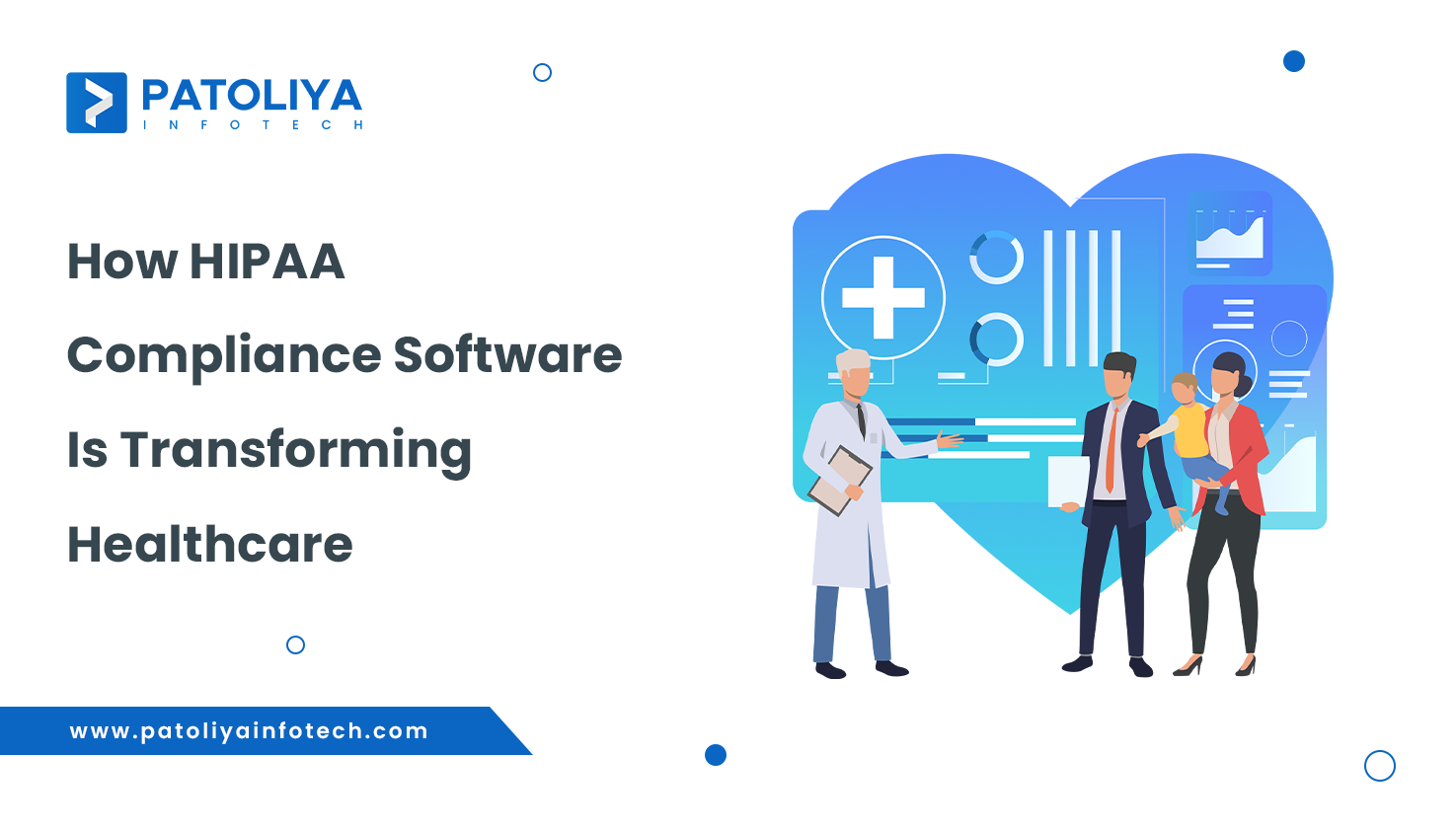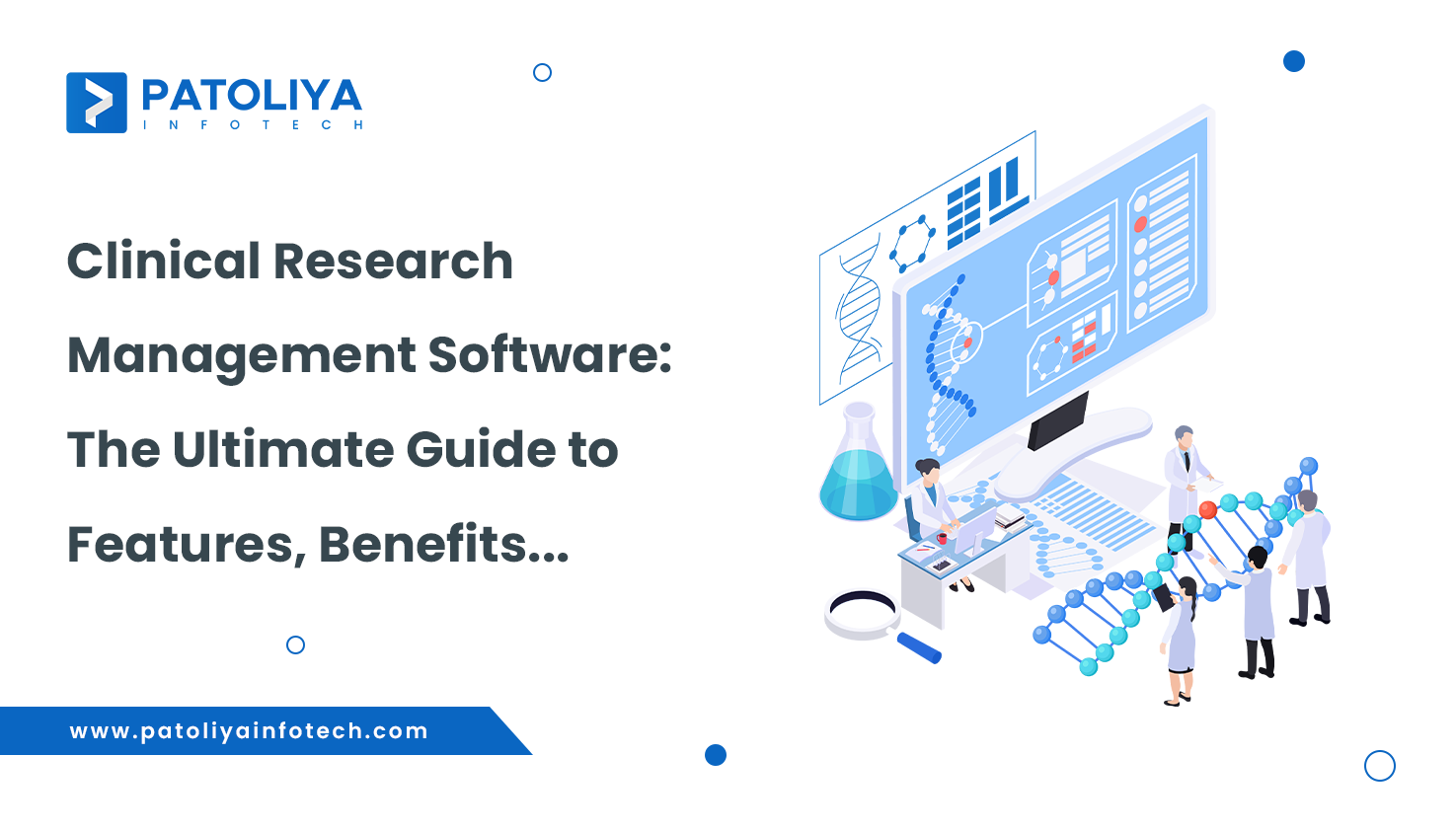How Restaurant Technology Is Transforming Dining Experiences

Table of Contents
When you enter your go-to restaurant, you're likely thinking about the smell of freshly prepared food or the welcoming smile of the server. But behind that ideal serving of pasta or hassle-free online order is something you may not immediately see—that is, restaurant technology. Technology is transforming the way restaurants operate, from AI-assisted ordering systems to intelligent kitchens. And it’s not just about making things easier for staff—it’s about improving the entire dining experience, for everyone involved.
In this blog, we’ll explore how restaurant technology is enhancing dining environments, boosting food quality, deepening customer relationships, and even helping the planet.
Creating Optimal Dining Environments Through Smart Technology
One of the greatest shifts we’ve seen in a long time is how eatery innovation is forming the physical and digital environment of feasting spaces. It's not almost about vibe through decor—it's moreover almost leveraging information, robotization, and network to create encounters custom fitted to each visitor.
Smart Kitchen Systems: How Tech Keeps the Kitchen Running Smoothly
You might never notice it as a diner, but behind that immaculate plate of pasta or that steaming burger lies a background beat fueled by technology. It's unobtrusive and understated, yet highly efficient. Whether it's a small neighborhood cafe or high-speed delivery kitchen, intelligent systems are now doing what sticky notes and yelling across the line once managed—and doing it better.
Real-Time Order Routing Through KDS
Orders today don't wait to be walked back into the kitchen. The moment a customer taps "confirm" on their phone, tablet, or self-service kiosk, the information appears exactly where it's needed—on the kitchen display system (KDS). The system organizes them by station, prep time, and priority so cooks aren't just working—they're working smart.
| Country | Restaurant | Tech Highlight |
| USA | Domino’s | GPS delivery tracking + voice ordering via Alexa |
| UK | YO! Sushi | App-connected conveyor belt food delivery |
| Japan | McDonald’s | AI-based menu recommendations based on weather |
| UAE | Pizza Hut | Augmented reality menus + robot hosts |
No More Lost Tickets or Errors
Paper tickets were their time, but anyone who's worked a Friday night shift will appreciate how easily they get lost, smudged, or misread. Today's kitchens employ digital screens that remain visible, readable, and up to the second even when it's bedlam on the line. This results in fewer mistakes, less food waste, and a great deal less stress.
Key Features & Benefits
Smarter Workflow, Smoother Service
With color-coded tickets and internal timers, the KDS makes it easier for teams to identify bottlenecks, set priorities on late items, and maintain dishes coming at the right velocity, so meals arrive simultaneously, hot, and on schedule.
Communication Without Chaos
Instead of yelling “table 8’s ready!” Employees merely tap the screen across a cacophonous kitchen. The system sends an alert to the front of house or even the customer (for pickups), keeping the whole team—and the guest—on the same page.
Everything in One Place
Dining room orders, delivery app orders, and online reservations all funnel into the same dashboard. That translates to no switching between devices, no lost tickets, and no wondering what needs to be produced when.
Less Error, More Smiling Guests
Digital tickets never get smudged with sauce or left behind in the fryer. They're always legible, always correct, and tied directly to the POS, reducing expensive mistakes and angry guests.
Operational Benefits
Meals That Arrive at the Table at the Perfect Time
Nobody wants cold fries with their burger. With coordinated prep at stations, kitchen technology guarantees everything on a table gets done at once and arrives at the pass at its best.
Less Waste, Less Cost
Without the requirement for printed tickets or endless loops of receipt paper, restaurants cut costs and save on waste. In the long run, this small change makes a huge difference in the environment and the bottom line.
Plug-and-Play With Your Existing Setup
You won't need to rebuild your entire system. Contemporary KDS platforms play well with POS systems, delivery services, and even inventory software. It's all about flexibility and integration, not more stress.
Why It Really Matters
- Manages high-volume kitchens even in the busiest of rushes,
- provides clearer, cleaner order tracking, which lowers waste and human error.
- Accelerates service, drives turns faster, and increases guest satisfaction
- Connects the front and the kitchen, ensuring everyone is working together
Smart restaurant tech isn't about being cutting-edge—smart restaurant tech is about making life simpler for actual people. For the line cook working to keep up, for the server with six tables to manage, for the manager holding it all together—it's the unsung partner that assists them in doing the best they can.
Because ultimately, the guest may only taste the food, but what they're going to remember is the experience
Old vs New Dining Experience
| Experience Area | Traditional Restaurant (Pre-Tech) | Modern Restaurant (With Tech) |
| Ordering | Wait for a server to take your order | Scan QR code and order directly from your phone |
| Payment | Ask for the bill, wait for card machine | Tap to pay or split bill instantly on mobile |
| Kitchen Workflow | Handwritten tickets, possible miscommunication | Digital KDS routes orders to correct stations |
| Loyalty Programs | Paper punch cards, easily lost | Personalized rewards via mobile apps and AI |
| Menu Updates | Reprint required for any changes | Instant updates across digital platforms |
| Customer Service | Server handles all questions manually | AI chatbot handles FAQs, multilingual guests |
| Feedback Collection | Feedback cards rarely returned | Instant ratings and comments via app or SMS |
Personalized Seating and Reservations
Shrewdly reserved computer programs such as OpenTable or Resy utilize client data and up-to-the-minute accessibility to maximize seating. For clients, that translates to less holding up time and more comfort. For restaurants, it translates to improved table turnover and fewer walkouts.
Numerous establishments are even employing AI-driven predictive analytics to schedule seating during peak periods. An example is the case of Eatsa using AI and touchscreens to process high-volume lunch orders with zero human cashiers. Orders were routed directly to the kitchen, and meals were placed in smart pickup cubbies. The result: served meals in under 90 seconds, even during lunch rush.
Noise and Temperature Controls
Have you ever eaten at a restaurant that was too cold or too noisy? Intelligent environmental controls now optimize lighting, temperature, and even noise levels by the hour or number of visitors. They're not gimmicks—they're science-driven. Research indicates that ideal dining settings can boost spending and dwell time by as much as 20%.
Transforming Kitchen Operations for Improved Food Quality
At the heart of every great restaurant is the kitchen—and this is where restaurant technology is really flexing its muscles.
Smart Kitchen Equipment
Ovens and stoves are not the only appliances used in modern kitchens. They’re filled with IoT-enabled appliances that can monitor cooking temperatures, track inventory, and even suggest recipes based on what’s in stock. That reduces human error and leads to more consistent meals.
For instance, precision cookers will notify chefs as soon as a steak reaches medium-rare perfection. Such precision guarantees that the guests receive the same level of quality whether they dine in on a Monday afternoon or a Saturday evening.
Real-Time Inventory Management
Nothing's worse for a customer than to be told their favorite dish is out. With computerized inventory, restaurants can monitor ingredients in real time and reorder before they sell out. Some systems even link up with supplier systems, making the process smooth from farm to fork.
Streamlined Staff Communication
KDS (Kitchen Display Systems) are becoming commonplace to replace the old paper ticket system. The kitchen's computerised panels get orders straight from the point-of-sale system. This removes misunderstandings, speeds up preparation, and lowers mistakes, especially for eateries with large patronages. It also makes it easier for the front and back of the house to work together more effectively.
Improving Customer Engagement Through Digital Innovation
Maybe the most apparent effect of restaurant technology is the way that it reconfigures interactions between restaurants and their visitors.
Contactless Ordering and Payment
QR code menus and mobile payments are now commonplace in many restaurants. In addition to being a hygiene protocol, these technologies also increase convenience. Visitors can order at their own pace, divide bills with ease, and pay instantly.
- Global Insight:
According to a 2023 Deloitte report, 70% of global diners prefer digital ordering options over traditional server-based ordering, especially in urban areas and quick-service restaurants. - Example:
In Tokyo, Japan, McDonald’s uses AI-powered kiosks that suggest menu items based on time of day and even weather conditions, making the ordering experience fast and personalized.
Toasts and Squares have made it simple for even tiny restaurants to provide smooth digital experiences without enormous technology budgets.
Loyalty Programs and Customization
Technology-facilitated loyalty programs reward repeat customers, but they also learn about likes and habits. That enables restaurants to customize offers, recommend favorite foods, and remind customers at the right moment ("Yearning for your standard iced caramel latte?"). It's personal, and that brings customers back.
AI Chatbots and Web Customer Service
With AI chatbots on websites and apps, customers can receive instant information regarding wait times, menus, or dietary needs, even after hours. For instance, a Delhi-based restaurant's website uses a chatbot that responds to more than 200 questions daily, making human staff available for more urgent issues.
Benefits of Restaurant Technology
Contemporary diners pay close attention to where their food originates and how it is produced. Well, restaurant technology is assisting kitchens in becoming greener and more accountable.
Reducing Food Waste
Smart scales and waste management software track what's being discarded and why. If a restaurant sees customers leaving half the fries on their plates, it could adjust portion sizes. Not only does this cut waste—it also saves on expenses.
Sustainability Spotlight:
Restaurants implementing food waste tracking technologies have seen a 25–35% reduction in plate waste, according to the World Resources Institute.
Example:
At Too Good To Go partner restaurants in Europe, unsold food is digitally tracked and bundled into discounted takeaway meals, helping cut both waste and carbon footprint.
Energy-Efficient Appliances
New cooking technology is less power- and water-hungry but still allows for premium performance. LED lighting, energy-efficient dishwashers, and smart thermostats all help restaurants lower their carbon impact.
Based on reservations and historical data, some restaurants even use AI systems to suggest the best times to turn on and off kitchen equipment.
Farm-to-Table Monitoring
Restaurants (and customers) can track ingredients on their journey thanks to blockchain technology and traceability software. It's a double benefit: restaurants have access to fresher ingredients, and customers have an added sense of security. This openness also assists businesses in obtaining compliance and aiding local agricultural communities.
The Human Side of Restaurant Technology
Though all this technology may sound high-tech, what makes restaurant technology different is its effect on people. It's not about replacing chefs or servers; it's about assisting them in what they do.
Empowering Staff
Tech tools eliminate mundane chores, enhance communication, and enable staff to concentrate on what truly counts: great hospitality. Training is shorter with interactive modules and online simulations. Scheduling apps enable employees to choose shifts and swap schedules without bureaucratic bottlenecks.
Improved Accessibility for All Guests
Restaurant tech is also being used to make dining more accessible. Screen reader-accessible digital menus are available for visually impaired customers. Restaurants are even applying AI to translate menus into several languages in real-time, making it easier for tourists and expats.
Conclusion
The way we eat has changed more in the last five years than in the previous fifty, thanks to restaurant technology. Each element of the eating experience is made more sustainable, efficient, and pleasurable by smart systems that operate silently in the background from the time your reservation is made until your plate is cleared.
The real magic, however, is when all of that technology just melts away and focus is placed on the most important aspects, like mouthwatering food, warm service, and precious memories.
Whether you're a foodie, a restaurant owner, or someone who's just into technology, it's clear that technology in restaurants isn't a trend. It's getting better, and there is momentum.
FAQs
What exactly is restaurant technology?
How does restaurant technology benefit customers?
Faster service with real-time order processing
Convenient payments via mobile wallets or tap-to-pay
Personalized offers and loyalty rewards through AI and apps
Greater transparency on ingredients, wait times, and order status
Whether they are ordering takeaway, dining in, or making a reservation, customers benefit from more control, quickness, and pleasure.
Is restaurant tech affordable for small businesses?
QR code ordering systems
Online reservation tools
Digital payment gateways
Cloud-based POS systems
frequently need little setup and are reasonably priced. Due to the subscription-based pricing of many systems, even food trucks and tiny eateries may use them.
Is smart restaurant technology only for big cities?
Compete with larger chains
Improve customer service
Reach more guests online
Operate more efficiently
The location doesn’t limit the impact—the right tech helps any restaurant thrive, anywhere.
Can all types of restaurants benefit from technology?
Fine-dining restaurant
Quick-service outlet
Food truck
Bakery or café
Ghost kitchen or cloud kitchen
Technology changes to fit the size and nature of your company. No matter the format or cuisine, it lets you offer consistent quality, track performance, and optimize workflows.
Is restaurant technology useful during peak hours or rush times?
Kitchen Display Systems (KDS)
Order routing software
Digital queue management help kitchen staff stay coordinated, reduce errors, and serve guests faster—even at maximum capacity. It keeps operations smooth and helps you turn more tables without sacrificing quality.
Can technology make restaurants more eco-friendly?
Reducing food waste through inventory and waste tracking tools
Lowering energy use with smart appliances and lighting systems
Eliminating paper waste via digital tickets and menus
Sourcing responsibly with supply chain traceability platforms
Going green with tech is not only good for the planet—it’s also great for your brand reputation and bottom line.



